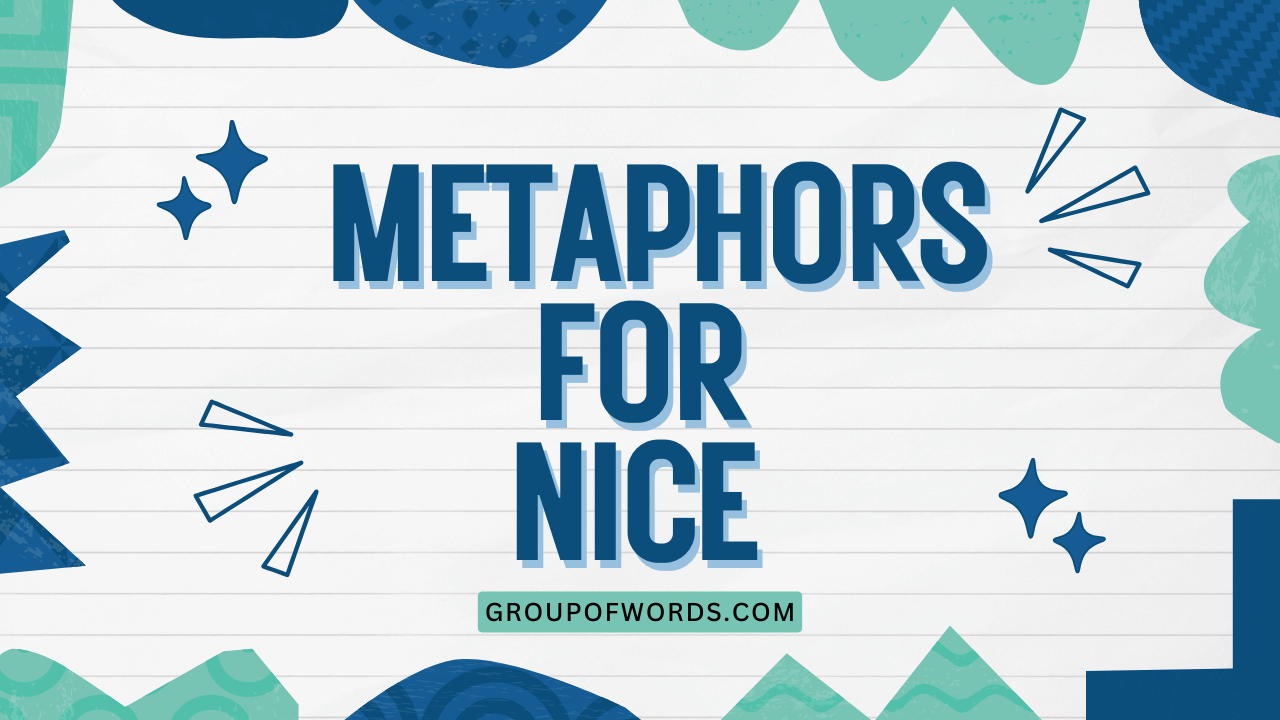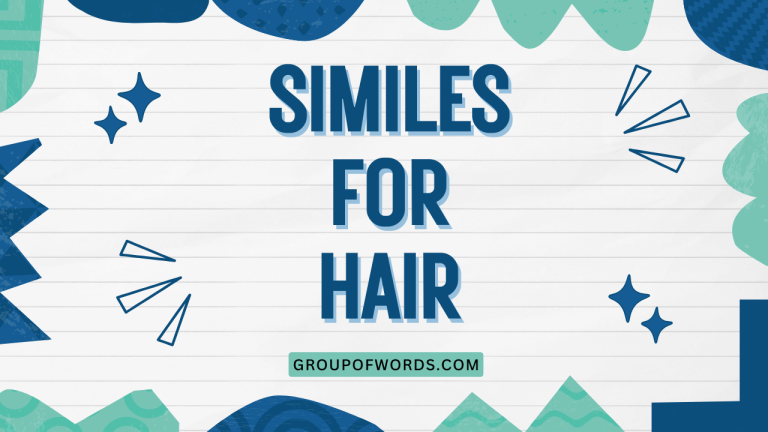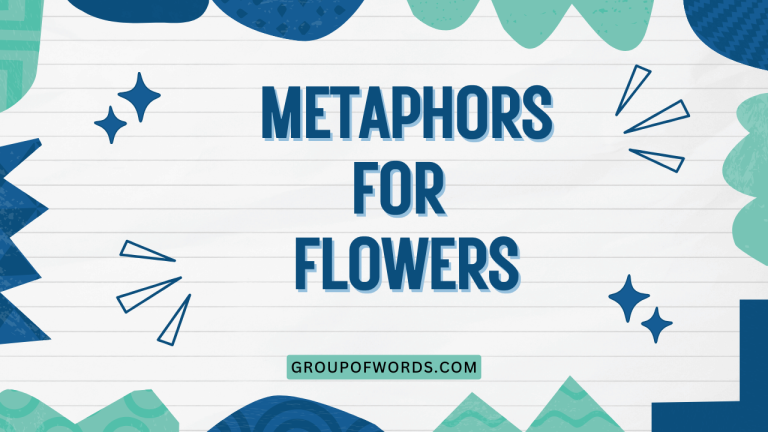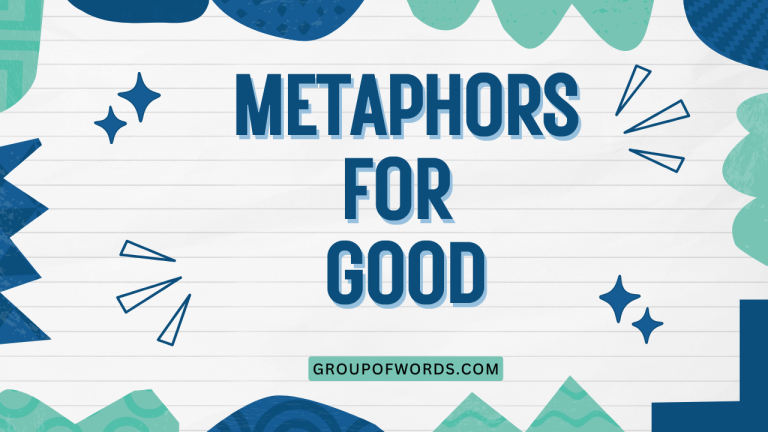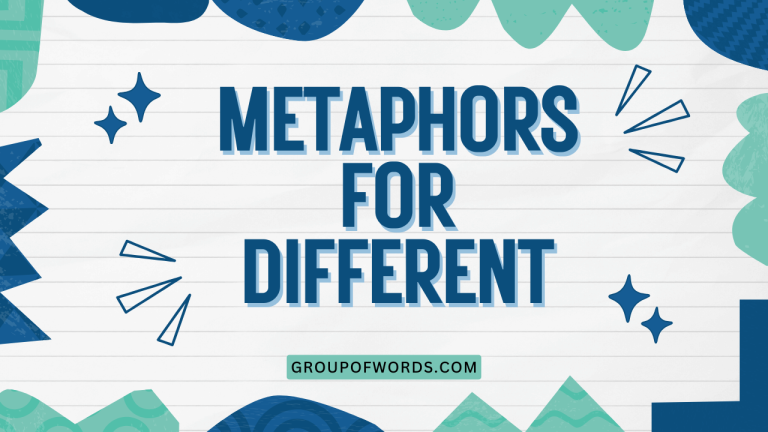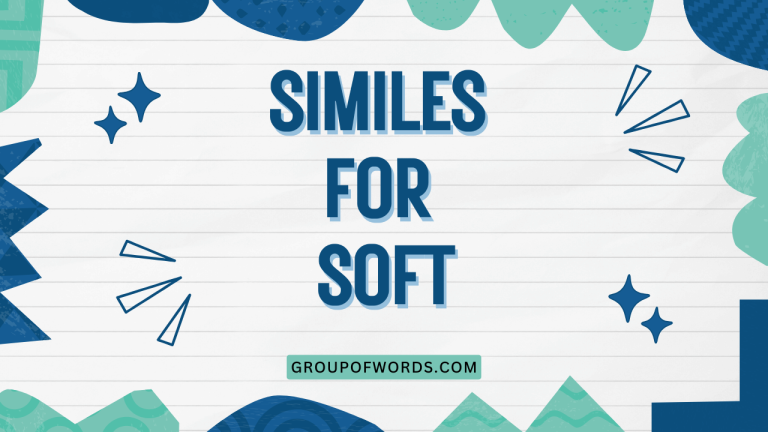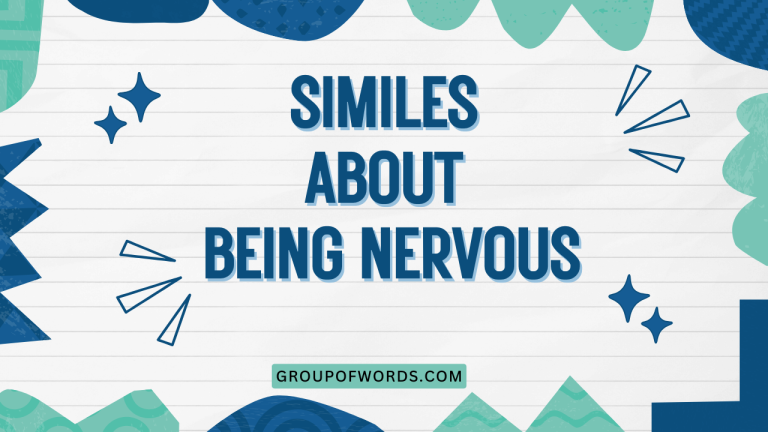Beyond “Nice”: Exploring Metaphors for Pleasantness in English
The English language is rich with ways to express positive attributes, and the word “nice” is just the tip of the iceberg. While “nice” is a perfectly acceptable adjective, relying on it too frequently can make your language sound bland and uninspired.
This article delves into the world of metaphors for “nice,” providing you with a diverse range of options to describe people, places, things, and experiences in more vivid and engaging ways. Understanding these metaphors will not only enhance your vocabulary but also improve your ability to communicate with greater nuance and creativity.
This guide is ideal for English language learners, writers looking to add flair to their prose, and anyone who wants to express themselves more effectively.
By exploring the metaphorical landscape of “nice,” we will unlock a treasure trove of expressive language. This will enable you to paint more colorful pictures with your words and connect with your audience on a deeper level.
Whether you’re describing a kind person, a beautiful sunset, or a delicious meal, this article provides you with the tools to go beyond the ordinary and embrace the extraordinary.
Table of Contents
- Introduction
- Definition of “Nice” and the Need for Metaphors
- Structural Breakdown of Metaphorical Language
- Types of Metaphors for “Nice”
- Examples of Metaphors for “Nice”
- Usage Rules for Metaphors
- Common Mistakes When Using Metaphors
- Practice Exercises
- Advanced Topics: Extending Metaphorical Language
- Frequently Asked Questions
- Conclusion
Definition of “Nice” and the Need for Metaphors
The word “nice” is generally defined as agreeable, pleasant, or satisfactory. It’s a versatile adjective that can describe a wide range of things, from a person’s character to the quality of a day.
However, its very versatility can also be its downfall. Because it’s so general, “nice” often lacks impact and fails to convey the specific qualities that make something truly enjoyable or admirable.
Metaphors, on the other hand, offer a way to express these qualities with greater precision and emotional resonance. A metaphor is a figure of speech that directly compares two unlike things, highlighting a shared characteristic.
By using metaphors, we can tap into the power of imagery and association to create more vivid and memorable descriptions. Instead of simply saying a person is “nice,” we can say they have a “heart of gold,” instantly conveying their kindness and generosity.
The use of metaphors elevates language from the mundane to the meaningful. They allow us to paint pictures with words, engaging the reader’s senses and emotions.
By exploring metaphors for “nice,” we can expand our expressive capabilities and communicate with greater depth and authenticity.
Structural Breakdown of Metaphorical Language
Understanding the structure of metaphorical language is crucial for using it effectively. At its core, a metaphor consists of two main elements: the tenor and the vehicle. The tenor is the subject being described (e.g., a person’s personality), and the vehicle is the thing used to describe it metaphorically (e.g., sunshine). The connection between the tenor and the vehicle lies in their shared qualities.
For example, in the metaphor “He has a heart of gold,” the tenor is the person’s character, and the vehicle is “a heart of gold.” The shared quality is kindness and generosity. The metaphor works because gold is associated with preciousness and purity, qualities that are also attributed to a kind and generous person.
Effective metaphors often rely on imagery and sensory details to create a strong impression. They engage the reader’s imagination and allow them to experience the subject in a new and insightful way.
The power of a metaphor lies in its ability to condense complex ideas into a single, memorable image.
Types of Metaphors for “Nice”
There are many different types of metaphors that can be used to express the concept of “nice,” each with its own unique flavor and emphasis. Here are some of the most common categories:
Metaphors of Warmth and Comfort
These metaphors evoke feelings of coziness, security, and well-being. They are often used to describe people who are kind, supportive, and make others feel at ease.
Metaphors of Brightness and Light
These metaphors emphasize positivity, optimism, and clarity. They can be used to describe people who are cheerful, inspiring, or enlightening, as well as things that are uplifting and joyful.
Metaphors of Smoothness and Ease
These metaphors suggest a lack of difficulty, friction, or unpleasantness. They are often used to describe situations or experiences that are pleasant, effortless, and enjoyable.
Metaphors of Sweetness and Delight
These metaphors evoke feelings of pleasure, indulgence, and satisfaction. They are often used to describe things that are delicious, charming, or delightful.
Metaphors of Beauty and Attractiveness
These metaphors focus on aesthetic appeal and pleasing qualities. They are used to describe things that are visually stunning or emotionally captivating.
Metaphors of Kindness and Generosity
These metaphors emphasize acts of compassion, empathy, and giving. They describe people who are thoughtful, caring, and willing to help others.
Examples of Metaphors for “Nice”
To illustrate the different types of metaphors for “nice,” here are some examples, categorized according to the themes discussed above. These examples are presented in tables to provide clarity and easy reference.
Examples: Warmth and Comfort
The following table provides examples of metaphors that evoke warmth and comfort, replacing the simple adjective “nice”. These examples help to paint a more vivid and comforting picture.
| Metaphor | Context |
|---|---|
| A warm blanket on a cold day | Describing a comforting friendship. “Her friendship was like a warm blanket on a cold day.” |
| A cozy fire | Describing a welcoming atmosphere. “The atmosphere in the cafe was like a cozy fire.” |
| A comforting hug | Describing a supportive gesture. “His words were like a comforting hug.” |
| A safe harbor | Describing a reliable person. “She was a safe harbor in a storm.” |
| A soft pillow | Describing a gentle presence. “His presence was like a soft pillow.” |
| A gentle breeze | Describing a calming influence. “Her voice was like a gentle breeze.” |
| A soothing balm | Describing something that relieves pain. “The music was a soothing balm to her soul.” |
| A warm cup of tea | Describing a comforting experience. “The conversation was like a warm cup of tea.” |
| A sun-drenched meadow | Describing a peaceful place. “The park was like a sun-drenched meadow.” |
| A crackling fireplace | Describing a lively and comforting environment. “The family gathering was like a crackling fireplace.” |
| A warm embrace | Describing a loving gesture. “Her welcome was like a warm embrace.” |
| A comforting presence | Describing someone who makes you feel at ease. “Her presence was a comforting presence during the difficult time.” |
| A warm ray of sunshine | Describing a positive influence. “His smile was like a warm ray of sunshine.” |
| A cozy nook | Describing a comfortable place. “The library was like a cozy nook.” |
| A warmhearted friend | Describing a kind and generous person. “She was a warmhearted friend to all.” |
| A haven of tranquility | Describing a peaceful and calm place. “The garden was a haven of tranquility.” |
| A gentle hand to hold | Describing a supportive companion. “He was a gentle hand to hold during her struggles.” |
| A warm, inviting smile | Describing a friendly and welcoming expression. “She greeted us with a warm, inviting smile.” |
| A comforting word in need | Describing a timely and supportive message. “His words were a comforting word in need.” |
| A warm and fuzzy feeling | Describing a sense of comfort and contentment. “Being with family gave me a warm and fuzzy feeling.” |
| Like being wrapped in cotton wool | Describing a feeling of being completely protected and safe. “Spending time at the spa was like being wrapped in cotton wool.” |
| Like sinking into a warm bath | Describing a feeling of deep relaxation and comfort. “Listening to that music was like sinking into a warm bath.” |
Examples: Brightness and Light
The following table offers metaphors related to brightness and light, providing alternatives to “nice” that add a sense of radiance and positivity.
| Metaphor | Context |
|---|---|
| A ray of sunshine | Describing a cheerful person. “She was a ray of sunshine in the office.” |
| A beacon of hope | Describing an inspiring leader. “He was a beacon of hope for the community.” |
| A guiding light | Describing a mentor. “She was a guiding light in my career.” |
| A sparkling gem | Describing a talented person. “He was a sparkling gem in the art world.” |
| A bright star | Describing a promising student. “She was a bright star in the class.” |
| A flash of inspiration | Describing a brilliant idea. “The idea was a flash of inspiration.” |
| A luminous presence | Describing someone who radiates positivity. “Her presence was a luminous presence.” |
| A sunbeam | Describing a small burst of happiness. “His smile was like a sunbeam.” |
| A radiant smile | Describing a joyful expression. “She had a radiant smile.” |
| A dazzling personality | Describing someone with a captivating charm. “He had a dazzling personality.” |
| A bright future | Describing a promising outlook. “The company had a bright future.” |
| A shining example | Describing someone who sets a good standard. “She was a shining example of dedication.” |
| A glimmer of hope | Describing a small chance of success. “There was a glimmer of hope in the situation.” |
| A beacon of light | Describing something that guides or inspires. “The library was a beacon of light for the community.” |
| A sparkling personality | Describing someone who is lively and engaging. “She had a sparkling personality that drew people to her.” |
| Illuminating insight | Describing a profound understanding or revelation. “His speech provided illuminating insight into the problem.” |
| A brilliant mind | Describing someone with exceptional intelligence. “She was known for her brilliant mind and innovative ideas.” |
| A light in the darkness | Describing something that brings hope and guidance in difficult times. “Her kindness was a light in the darkness for many.” |
| A bright and cheerful disposition | Describing someone who is consistently happy and optimistic. “He had a bright and cheerful disposition that made everyone smile.” |
| A star that shines brightly | Describing someone who stands out and excels in their field. “She was a star that shone brightly in the world of science.” |
| Full of sunshine | Describing a person or place that is exceptionally cheerful and pleasant. “Her personality was full of sunshine, always brightening the room.” |
| Like a burst of sunlight | Describing something that brings sudden joy and happiness. “His laughter was like a burst of sunlight.” |
Examples: Smoothness and Ease
This table provides metaphors relating to smoothness and ease, offering more descriptive alternatives to the word “nice” by emphasizing effortlessness and pleasantness.
| Metaphor | Context |
|---|---|
| Smooth sailing | Describing an easy process. “The project was smooth sailing from start to finish.” |
| A walk in the park | Describing an effortless task. “The exam was a walk in the park for her.” |
| Like butter | Describing something that moves easily. “The car drove like butter.” |
| A seamless transition | Describing a smooth change. “The transition to the new system was seamless.” |
| A gentle flow | Describing a harmonious process. “The conversation had a gentle flow.” |
| Effortless grace | Describing someone who moves with ease and elegance. “She moved with effortless grace.” |
| A well-oiled machine | Describing something that functions perfectly. “The team worked like a well-oiled machine.” |
| A breeze | Describing something easy to do. “Cleaning the house was a breeze.” |
| A piece of cake | Describing an easily accomplished task. “The test was a piece of cake.” |
| A glide | Describing a smooth movement. “The skater moved with a glide.” |
| A flowing river | Describing a continuous and easy process. “The writing process was like a flowing river.” |
| A well-trodden path | Describing a straightforward route. “The solution was a well-trodden path.” |
| A gentle slope | Describing an easy ascent. “The hill was a gentle slope.” |
| A smooth operator | Describing someone who is skilled and persuasive. “He was a smooth operator in negotiations.” |
| A silky texture | Describing a smooth and pleasant sensation. “The fabric had a silky texture.” |
| A clear path forward | Describing a situation with no obstacles or confusion. “The plan provided a clear path forward.” |
| A seamless performance | Describing a flawless and effortless execution. “The orchestra delivered a seamless performance.” |
| Like a hot knife through butter | Describing something that is done with extreme ease. “The new software cut through the data like a hot knife through butter.” |
| As easy as pie | Another way to describe something that is very simple and straightforward. “Learning to ride a bike was as easy as pie for her.” |
| A walk in the sunshine | Describing something that is not only easy but also enjoyable and pleasant. “The project was a walk in the sunshine.” |
| Uncomplicated | Describing something simple and easy to understand or deal with. “The instructions were clear and uncomplicated.” |
| User-friendly | Describing something that is easy to use or navigate. “The new software is very user-friendly.” |
Examples: Sweetness and Delight
The following table contains metaphors related to sweetness and delight, offering more flavorful and enjoyable alternatives to the generic term “nice”.
| Metaphor | Context |
|---|---|
| Sweet as honey | Describing a kind person. “She was as sweet as honey.” |
| A breath of fresh air | Describing a delightful change. “The vacation was a breath of fresh air.” |
| A delightful surprise | Describing an unexpected pleasure. “The gift was a delightful surprise.” |
| A delicious treat | Describing an enjoyable experience. “The concert was a delicious treat.” |
| A sweet melody | Describing a pleasing sound. “Her voice was like a sweet melody.” |
| A taste of heaven | Describing something exceptionally good. “The dessert was a taste of heaven.” |
| A fragrant bloom | Describing something beautiful and pleasing. “The garden was like a fragrant bloom.” |
| A sweet serenade | Describing a charming gesture. “His words were like a sweet serenade.” |
| A sugary delight | Describing something particularly enjoyable. “The candy was a sugary delight.” |
| A lovely fragrance | Describing a pleasant smell. “The flowers had a lovely fragrance.” |
| A sweet dream | Describing a pleasant fantasy. “The vacation was like a sweet dream.” |
| A charming encounter | Describing a delightful meeting. “The meeting was a charming encounter.” |
| A sweet disposition | Describing a pleasant temperament. “She had a sweet disposition.” |
| A delectable experience | Describing something highly enjoyable. “The meal was a delectable experience.” |
| A sweet songbird | Describing a beautiful singer. “She was a sweet songbird.” |
| An exquisite pleasure | Describing something that gives intense enjoyment. “Listening to live jazz is an exquisite pleasure.” |
| A heavenly scent | Describing something that smells incredibly pleasant. “The roses had a heavenly scent.” |
| Like a box of chocolates | Describing something that is full of delightful surprises. “Life is like a box of chocolates.” |
| A sugar-coated moment | Describing a moment that is exceptionally sweet and enjoyable. “The proposal was a sugar-coated moment for them both.” |
| As pleasant as a summer breeze | Describing something that is refreshing and delightful. “Her laughter was as pleasant as a summer breeze.” |
| Sunshine on a cloudy day | Describing something that brings joy and brightness to an otherwise dull or gloomy situation. “Her smile was like sunshine on a cloudy day.” |
| A symphony of flavors | Describing a culinary experience that is harmonious and delightful. “The dish was a symphony of flavors.” |
Examples: Beauty and Attractiveness
This table provides metaphors related to beauty and attractiveness, offering alternatives to the word “nice” that highlight aesthetic appeal and captivating qualities.
| Metaphor | Context |
|---|---|
| A work of art | Describing something beautiful and skillfully made. “The building was a work of art.” |
| A stunning vista | Describing a beautiful view. “The view from the mountain was a stunning vista.” |
| An enchanting melody | Describing a beautiful piece of music. “The song was an enchanting melody.” |
| A captivating charm | Describing someone with an attractive personality. “She had a captivating charm.” |
| A picturesque scene | Describing a visually appealing setting. “The village was a picturesque scene.” |
| A radiant beauty | Describing someone with striking good looks. “She was a radiant beauty.” |
| A breathtaking view | Describing a spectacular sight. “The sunset was a breathtaking view.” |
| An elegant design | Describing something stylish and refined. “The dress had an elegant design.” |
| A graceful dancer | Describing someone who moves with beauty and poise. “She was a graceful dancer.” |
| A mesmerizing performance | Describing something that captures attention. “The play was a mesmerizing performance.” |
| A lovely sight | Describing something pleasing to the eye. “The garden was a lovely sight.” |
| A beautiful creation | Describing something artistically made. “The sculpture was a beautiful creation.” |
| A charming landscape | Describing a visually pleasing area of land. “The countryside was a charming landscape.” |
| A stunning masterpiece | Describing a great work of art. “The painting was a stunning masterpiece.” |
| A graceful presence | Describing someone who carries themselves with elegance. “She had a graceful presence.” |
| A vision of loveliness | Describing someone or something that is exceptionally beautiful and pleasing to look at. “She was a vision of loveliness in her wedding dress.” |
| A symphony of colors | Describing a scene or artwork that features a harmonious and beautiful arrangement of colors. “The garden was a symphony of colors in the spring.” |
| A feast for the eyes | Describing something that is visually stunning and delightful to observe. “The fireworks display was a feast for the eyes.” |
| As beautiful as a rose | Describing someone or something that is exceptionally beautiful and delicate. “She was as beautiful as a rose.” |
| Like a dream come true | Describing something that is so beautiful and perfect that it feels unreal. “The wedding was like a dream come true.” |
| A picturesque view | Describing a scene that is visually attractive and charming, like a picture. “The village nestled in the valley offered a picturesque view.” |
| Elegantly crafted | Describing something made with great skill and attention to detail, resulting in a refined and beautiful object. “The furniture was elegantly crafted from the finest wood.” |
Examples: Kindness and Generosity
This table offers metaphors related to kindness and generosity, offering alternatives to the word “nice” that highlight compassionate and giving qualities.
| Metaphor | Context |
|---|---|
| A heart of gold | Describing a very kind person. “She had a heart of gold.” |
| An open hand | Describing someone who is generous. “He always had an open hand for those in need.” |
| A helping hand | Describing someone who is supportive. “She offered a helping hand to her neighbor.” |
| A warm spirit | Describing someone with a kind and generous nature. “He had a warm spirit that made everyone feel welcome.” |
| A generous soul | Describing someone who is exceptionally giving. “She was a generous soul who always put others first.” |
| A compassionate heart | Describing someone who is empathetic and caring. “He had a compassionate heart for the less fortunate.” |
| A gentle touch | Describing someone who is kind and considerate. “She had a gentle touch when dealing with children.” |
| A giving nature | Describing someone who is naturally generous. “He had a giving nature and was always willing to help.” |
| A kind soul | Describing someone who is inherently good and kind. “She was a kind soul who always saw the best in others.” |
| A charitable spirit | Describing someone who is inclined to give to charity. “He had a charitable spirit and supported many causes.” |
| A benevolent influence | Describing someone who has a positive impact on others. “She was a benevolent influence in the community.” |
| An angel in disguise | Describing someone who performs acts of kindness unexpectedly. “She was an angel in disguise, always helping those in need.” |
| A fountain of goodwill | Describing someone who consistently shows kindness and generosity. “He was a fountain of goodwill, spreading positivity wherever he went.” |
| A soft spot for others | Describing someone who feels deep empathy and concern for others. “She had a soft spot for others, always willing to lend an ear or a hand.” |
| A source of comfort | Describing someone whose kindness provides solace to those in distress. “He was a source of comfort to many during their difficult times.” |
| A true Samaritan | Describing someone who selflessly helps others, especially strangers. “She was a true Samaritan, always going out of her way to assist those in need.” |
| A champion of the underdog | Describing someone who fights for the rights and welfare of those who are marginalized or disadvantaged. “He was a champion of the underdog, advocating for fairness and equality.” |
| A pillar of support | Describing someone who provides unwavering support and encouragement to others. “She was a pillar of support for her family and friends.” |
| A beacon of compassion | Describing someone whose actions and words consistently demonstrate empathy and understanding. “He was a beacon of compassion, always responding with kindness and care.” |
| A giver of second chances | Describing someone who is willing to forgive and offer opportunities for redemption. “She was a giver of second chances, believing in the potential for everyone to improve.” |
| An altruistic soul | Describing someone who is genuinely selfless and motivated by the desire to help others. “She was an altruistic soul, dedicating her life to serving the community.” |
| Generous to a fault | Describing someone who is so generous that it can sometimes be detrimental to themselves. “He was generous to a fault, often giving away his own possessions to help others.” |
Usage Rules for Metaphors
While metaphors can greatly enhance your writing, it’s important to use them judiciously and effectively. Here are some key usage rules to keep in mind:
- Clarity: Ensure that your metaphor is clear and understandable. The connection between the tenor and the vehicle should be readily apparent.
- Originality: Strive for originality in your metaphors. Avoid clichés and overused expressions.
- Appropriateness: Choose metaphors that are appropriate for the context and tone of your writing.
- Consistency: Maintain consistency in your metaphors. Avoid mixing metaphors that create confusing or contradictory images.
- Moderation: Use metaphors sparingly. Overusing metaphors can make your writing seem forced and unnatural.
Effective metaphors should enrich your writing, not obscure it. When used thoughtfully, they can add depth, color, and emotional impact to your communication.
Common Mistakes When Using Metaphors
Even experienced writers can make mistakes when using metaphors. Here are some common pitfalls to avoid:
- Mixed Metaphors: Combining two or more incompatible metaphors.
- Incorrect: “We need to nip it in the bud before it snowballs out of the water.” (Mixing plant growth, snow, and water)
- Correct: “We need to nip it in the bud before it snowballs out of control.”
- Clichés: Using overused and unoriginal metaphors.
- Incorrect: “He was as busy as a bee.” (Cliché)
- Correct: “He was working tirelessly, his energy a constant hum.”
- Inappropriate Metaphors: Using metaphors that don’t fit the context or tone.
- Incorrect: “The funeral was a real blast.” (Inappropriate use of “blast”)
- Correct: “The funeral was a somber and reflective occasion.”
- Overextended Metaphors: Continuing a metaphor for too long, making it cumbersome.
- Incorrect: “The project was a ship that needed a captain, and the captain needed a map, and the map needed a compass…” (Overextended)
- Correct: “The project needed strong leadership to succeed.”
By being aware of these common mistakes, you can avoid them and use metaphors more effectively in your writing.
Practice Exercises
Test your understanding of metaphors for “nice” with these practice exercises. Each exercise consists of 10 questions, with answers provided below.
Exercise 1: Identifying Metaphors
For each sentence, identify whether the underlined phrase is a metaphor for “nice” or not.
| Question | Answer |
|---|---|
| 1. Her smile was like a warm blanket. | Yes |
| 2. The car was red. | No |
| 3. He had a heart of gold. | Yes |
| 4. The weather was pleasant. | No |
| 5. She was a ray of sunshine. | Yes |
| 6. The book was interesting. | No |
| 7. He was smooth sailing through the project. | Yes |
| 8. The coffee was hot. | No |
| 9. The day was a sweet dream. | Yes |
| 10. The building was tall. | No |
Advanced Topics: Extending Metaphorical Language
Once you’re comfortable with basic metaphors, you can explore more advanced techniques to enrich your writing further. These include:
- Extended Metaphors: Developing a single metaphor throughout a piece of writing. This can add depth and coherence to your message.
- Mixed Metaphors (Used Intentionally): While generally avoided, intentionally mixing metaphors can create a surreal or humorous effect.
- Submerged Metaphors: Integrating metaphors so subtly that they become part of the everyday language, often unnoticed.
- Conceptual Metaphors: Understanding how metaphors shape our understanding of abstract concepts (e.g., “time is money”).
By mastering these advanced techniques, you can unlock the full potential of metaphorical language and communicate with greater artistry and impact.
Frequently Asked Questions
Why should I use metaphors instead of just saying “nice”?
Metaphors add depth, color, and emotional resonance to your writing. They help you express nuances that the word “nice” simply can’t capture.
How do I avoid using clichés when creating metaphors?
Brainstorm fresh and original comparisons. Think about unique qualities and associations related to the subject you’re describing.
Can I use multiple metaphors in a single sentence?
It’s generally best to avoid using too many metaphors in one sentence, as it can become confusing. However, a well-crafted sentence with carefully chosen metaphors can be effective.
How do I know if a metaphor is appropriate for my audience?
Consider your audience’s background and understanding. Choose metaphors that are relevant and accessible to them.
What’s the difference between a metaphor and a simile?
A metaphor directly compares two unlike things, while a simile uses “like” or “as” to make the comparison (e.g., “He is a lion” vs. “He is like a lion”).
Conclusion
By exploring the rich landscape of metaphors for “nice,” you’ve expanded your linguistic toolkit and gained a deeper understanding of the power of figurative language. Metaphors offer a way to transcend the ordinary and communicate with greater precision, creativity, and emotional impact.
Embrace the art of metaphorical expression, and watch your writing come alive with vivid imagery and resonant meaning. Whether you’re crafting a novel, writing a poem, or simply engaging in everyday conversation, the ability to use metaphors effectively will make you a more compelling and engaging communicator.
